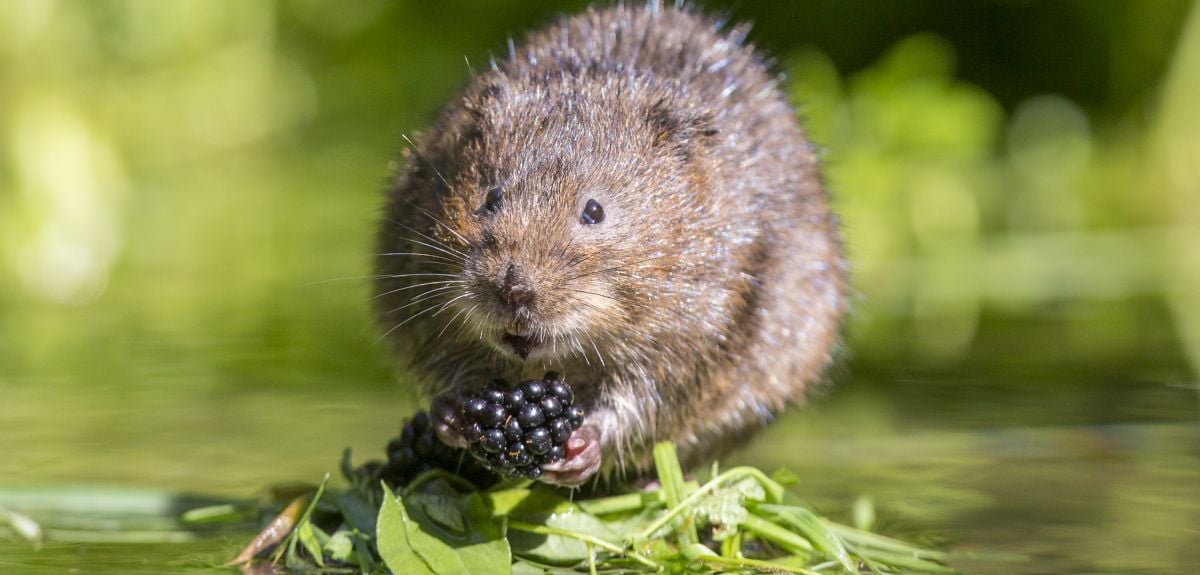
Are water voles at risk from development?
Professor David Macdonald and Dr Merryl Gelling of Oxford’s Wildlife Conservation Research Unit (WildCRU) discuss recent work which questions the efficacy of the mitigation technique and looks at ways to better protect one of Britain’s most endangered wild mammals, the water vole.
The water vole, forever immortalised as ‘Ratty’ in Kenneth Grahams’ classic tale Wind in the Willows, was formerly a common sight on waterways throughout mainland Britain. However, catastrophic declines due to invasive American mink combined with habitat loss and fragmentation have resulted in the water vole now being considered one of Britain’s most endangered wild mammals. As such, water voles and their burrows are fully protected under the Wildlife and Countryside Act. Despite these measures, development works affecting the bankside have created an additional pressure on remaining populations and while we might hope Toad is safe in Toad Hall, Ratty has been in peril. However, our research, conducted in collaboration with Natural England, Mammal Society and PTES, amongst others, offers a simple, practical solution.
Natural England created a licence to permit intentional disturbance of water voles - with the idea of giving the voles a chance to move to safety before development work begins. This involved encouraging the voles to relocate by removing any riverside vegetation, and then, once they were thought to be safely out of harm’s way, strategically destroying their burrows to prevent the animals’ return. Such activities, which are intended to conserve the water voles while enabling approved development, are licensed between mid-February and mid-April and must not exceed 50m of bankside length.
However, while the goal of the approach is to displace the animals, our research found that the voles had other ideas. Radio-tracking water voles subjected to this procedure found that they often steadfastly stayed put.
These findings, published today in Conservation Evidence, revealed no overall movement of water voles out of areas where displacement works had occurred. On the contrary, many voles remained faithful to their burrows. The guidelines had always insisted that destruction of burrows should be undertaken cautiously and only during spring, in the hope of saving the lives of any water voles remaining. However, that was in the expectation that at most, only a few bankside denizens would stubbornly refuse to shift. Now it seems the majority stand firm, shifting the balance of risks. This behaviour does not alter between spring and autumn, when vole populations are at their highest.
While labour intensive, the solution proposed in our study - which includes careful excavation of burrows left exposed by vegetation, and then removing the water voles by hand, is worth the effort. With this vole-sensitive and life-saving approach, we believe the displacement method can be a pragmatic and proportional solution for small-scale developments where water voles are present.
Water voles often remained in their burrows after vegetation removal, highlighting the need for burrow excavation to proceed with caution to allow animals to relocate prior to development works starting. There was no difference in behaviour in either spring or autumn, suggesting that works under this licence could occur outside of the current mid-February to mid-April window, potentially reducing costly delays for development works.
It's a particular pleasure to have been able to work with the government’s statutory agency, Natural England, to solve this practical problem, along with leading wildlife charities – a splendid example of all pulling together, and now we hope and expect developers will follow suit.
Not to exhaust the Wind in the Willows reference, but, Toad is in a mess too. However, that’s another story, and one we are busily researching.
The research was carried out in the Upper Thames region and predominantly funded by a partnership between Natural England, Peoples’ Trust for Endangered Species, The Mammal Society, Universities Federation for Animal Welfare, and Thames Water, with additional support from M&H Ecology Ltd, RSK Ltd, Arcadis, ERM Ltd, Ecosulis and the Environment Agency.